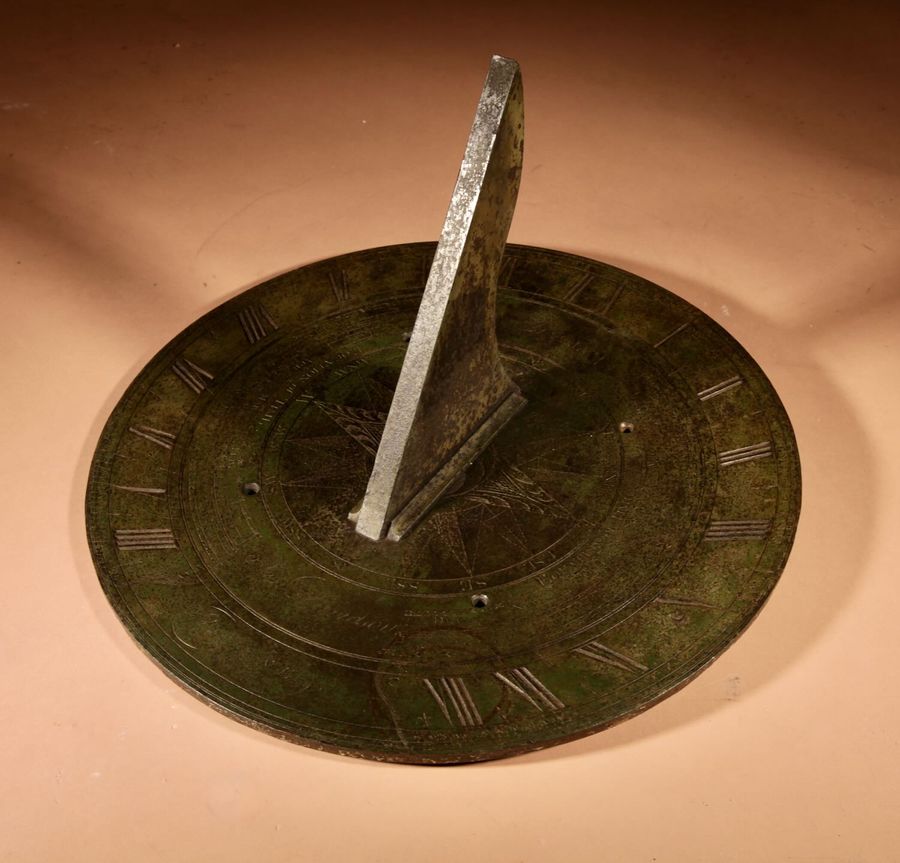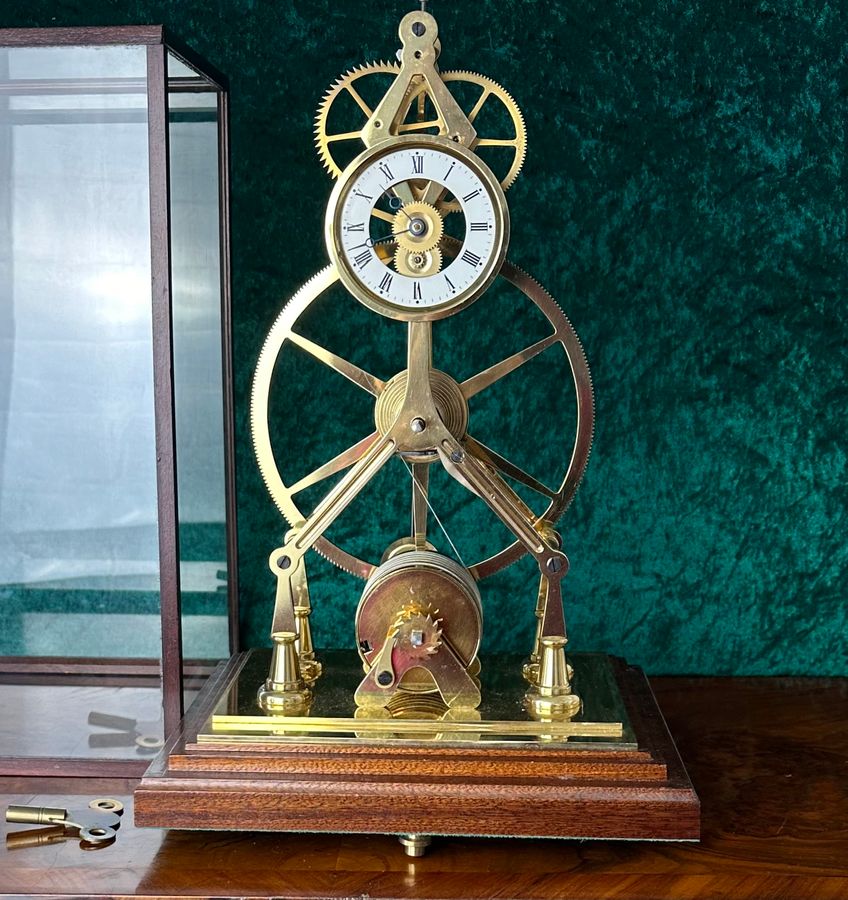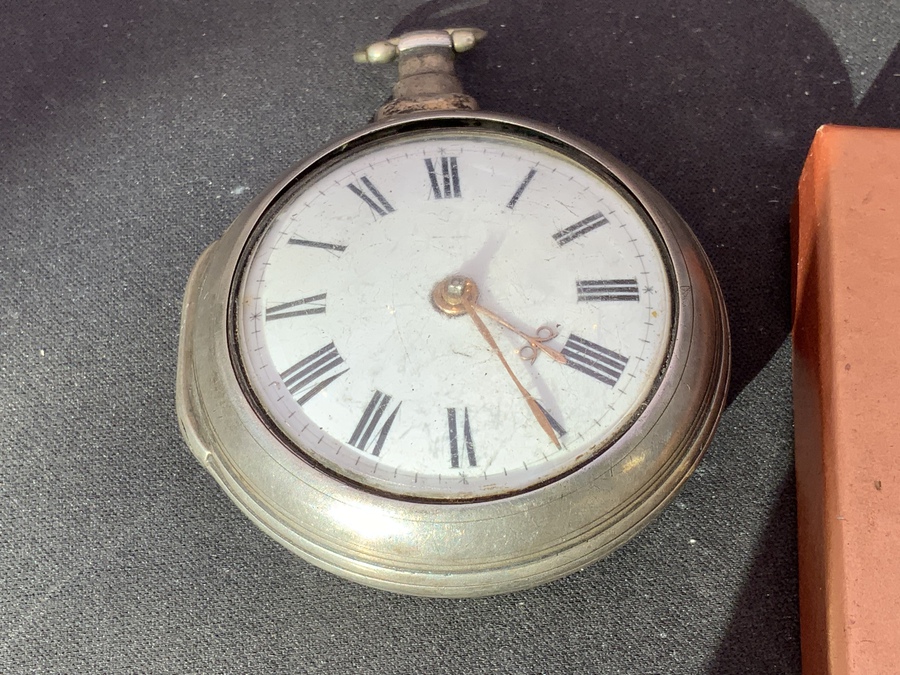featured item
Time for antiques: clocks, sundials and timepieces
Posted by Chris on 25/10/2024
As the clocks ‘go back’ this weekend in the UK, antiques expert and founder of Antiques.co.uk, Iain Brunt, explores the origins of measuring time, and how sundials and clocks developed – with five top picks from our wide range of antique clocks from around the world (no matter what time zone you’re in).
Without the passage of time we simply wouldn't have antiques.
In the grand scheme of things, time passes relatively quickly, and then almost suddenly the modern items we buy today become antiques themselves. When your parents bought that clock back in 1963, they were unlikely to be considering its future life as an antique – unless they were particularly astute and forward-thinking.
So how did we get to where we are today?
Pictured: Unusual large Scottish bronze sundial, circa 1800. Price: £3,750 / $4,863
The evolution of measuring time
The oldest sundial on record came from Egypt and was made around 1500 B.C.E.
It consisted of a simple upright stick and a roughly semicircular base divided into 12 pie-shaped sections. The shadow of the stick gave an approximate hour of the day (in case you were wondering how sundials worked!)
But what did they do when it went dark at night? Well of course, eventually the clock was invented.
The first known clock was a water clock. This is a timepiece by which time is measured by the regulated flow of liquid into (inflow type) or out from (outflow type) a vessel, and where the amount of liquid can then be measured.
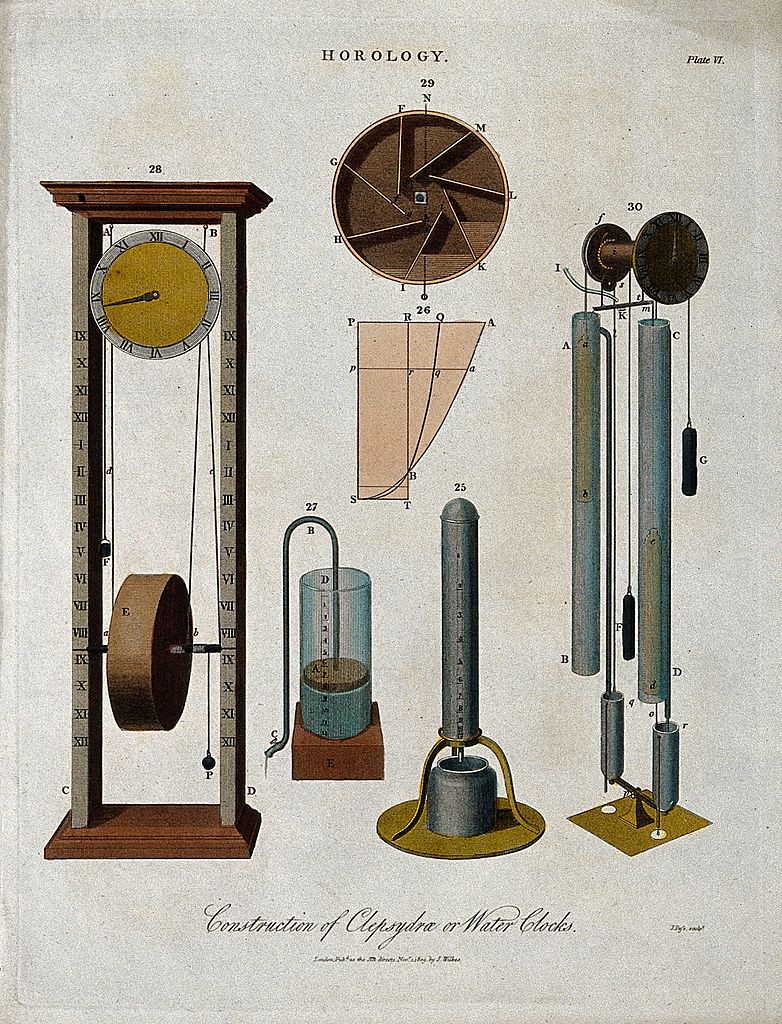
Pictured: diagrams of water clocks by J. Pass, 1809. (Used under CC via Wellcome Images, a website operated by Wellcome Trust, a global charitable foundation based in the United Kingdom).
Water clocks
Water clocks are one of the oldest time-measuring instruments. The simplest form of water clock, with a bowl-shaped outflow, existed in Babylon, Egypt, and Persia around the 16th century BC. Other regions of the world, including India and China, also provide early evidence of water clocks, but the earliest dates are less certain. Water clocks were used in ancient Greece and in ancient Rome, as described by technical writers such as Ctesibius (died 222 BC) and Vitruvius (died after 15 BC).
Today we have watches and clocks which speak to us metaphorically, and literally… and quite possibly one day they will become antiques too.
Pictured: Great Wheel Skeleton Clock. Price: £850 / $1,102
Are antique clocks a good investment?
Antique clocks can be a fantastic investment for collectors and enthusiasts alike. These timepieces are more than just functional objects; they hold historical, artistic, and monetary value that can appreciate over time.
Here’s why antique clocks might make a sound investment:
1. Historical significance and rarity
Many antique clocks were expertly handcrafted, often with intricate designs and mechanisms. They reflect the art and technology of their period, capturing a piece of history. The rarity of well-preserved antique clocks adds to their value.
As time goes on, it becomes increasingly difficult to find these pieces in good condition – or at all – which can drive up prices.
2. Artistic craftsmanship
Antique clocks often showcase exquisite craftsmanship. With materials like wood, brass, and glass, and detailed features such as hand-painted dials, intricate carvings, or gilded accents, these clocks are works of art. Certain makers, like the Swiss and French artisans of the 18th and 19th centuries, produced clocks that are highly collectible today.
Many collectors seek out pieces by renowned horologists, which adds to their value and collectability.
Pictured: Georgian Coventry Verge Silver Pocket Watch by Hood and Sons. Price: £3,950 / $5,123
3. Appreciation over time (no pun intended)
Antique clocks are generally less subject to economic fluctuations compared to stocks or other investments. Well-maintained clocks have a track record of appreciating over time, especially those made by famous manufacturers or with unique design elements.
Rare antique clocks from makers like Breguet, Cartier, or Patek Philippe are especially valued.
4. Functional decor with tangible value
Unlike many collectibles, clocks can serve as functional decor, making them more appealing for both aesthetic and investment purposes. They add elegance and charm to a space, making them desirable items for both antique collectors and interior designers.
5. Diversification of investments
For investors, antique clocks offer a good way to diversify. They’re part of the larger market for collectibles, which tends to retain value and can even appreciate during uncertain economic times.
Put it this way, if an item is over 50 years old and is commanding a decent price tag today, the chances are relatively good that it will continue to do so, or increase in value.
But bear in mind that whether or not an antique appreciates depends on many factors out of your control.
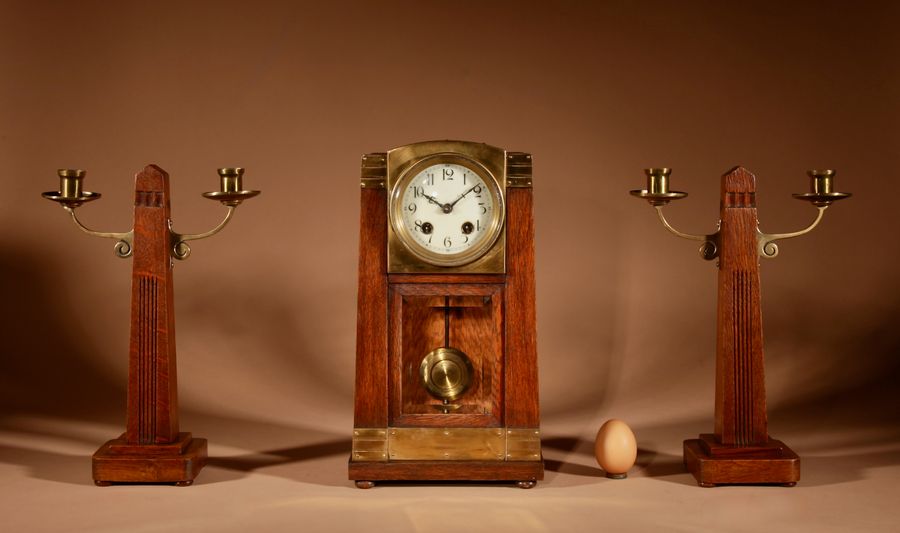
Pictured: Art Nouveau/Deco Gustav Serrurier-bovy (1858-1910): a rare oak and brass clock garniture, circa 1900-10. Price: £1,750 / $2,269
Five must-see antique clocks
Here are five notable collectible antique clocks listed with us on Antiques.co.uk:
- Great Wheel Skeleton Clock with Dust Cover. This rare skeleton clock features a mahogany frame and visible pendulum, offering a classic aesthetic (pictured above).
- Art Nouveau Gustav Serrurier-Bovy Clock Garniture. An oak and brass design from around 1900, crafted by a renowned designer (pictured above).
- French Boulle Mantle Clock, circa 1880. This clock includes intricate Boulle work and an 8-day movement (pictured below).
- 19th Century French Boulle Bracket Clock with Original Bracket. A highly collectible brass and ormolu-mounted clock with its original bracket.
- Magnificent French Mahogany Regulator, circa 1850. Featuring a temperature-compensated pendulum, this is a distinguished piece of horological history.
Each of these clocks is unique, both in design and historical value. That makes them superb collectibles for antique enthusiasts.
Pictured: French Boulle Mantle Clock, circa 1880. Price: £750 / $972
Why not start collecting antique clocks?
Start collecting today, and with loving care and attention they will last forever, and gain value. Browse hundreds of antique clocks listed with us.
What might your antiques be worth? Ask our experts here.







